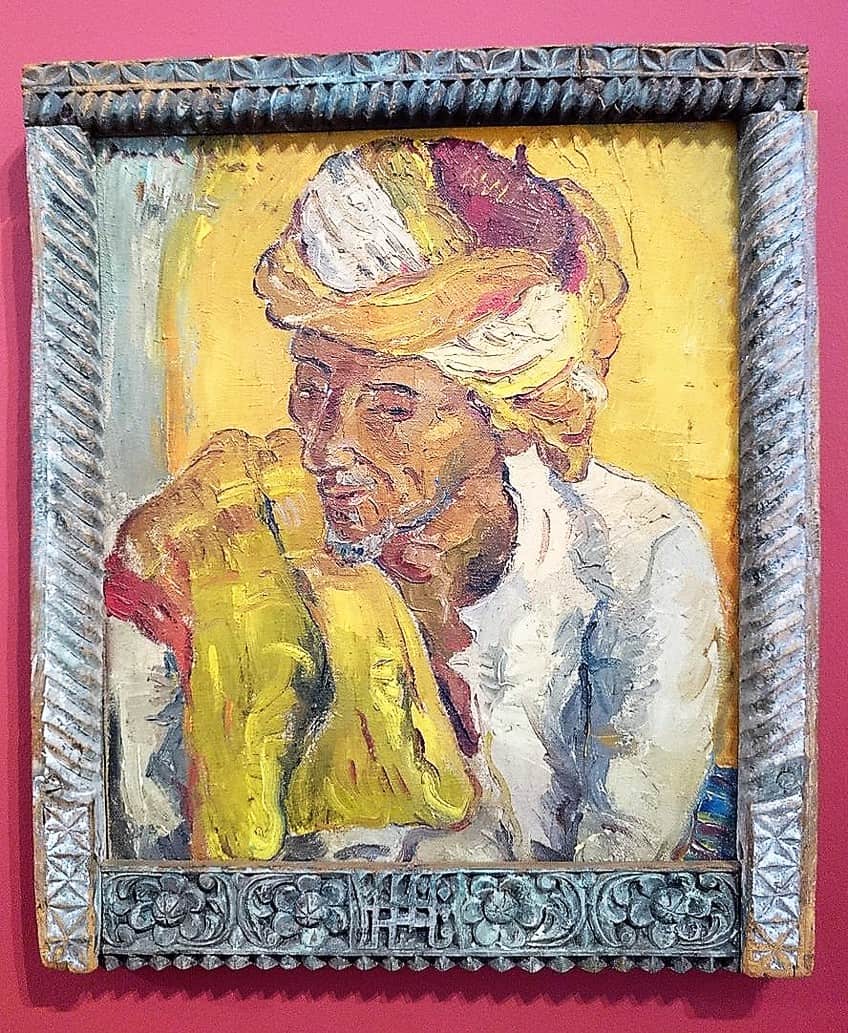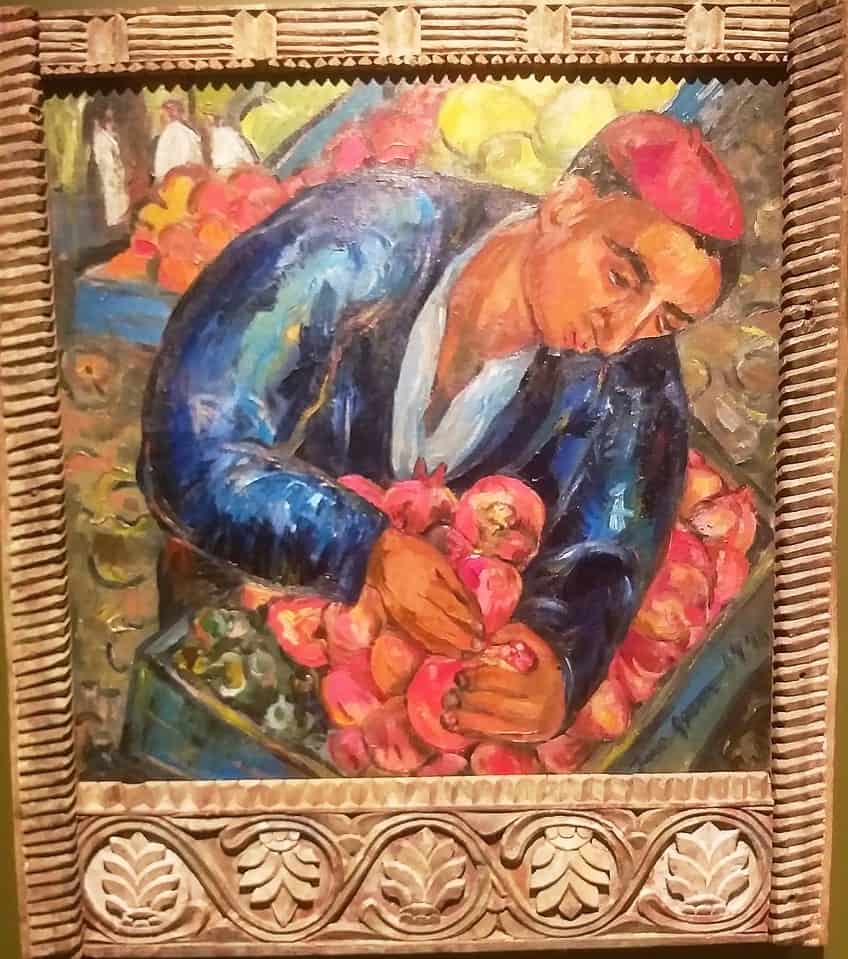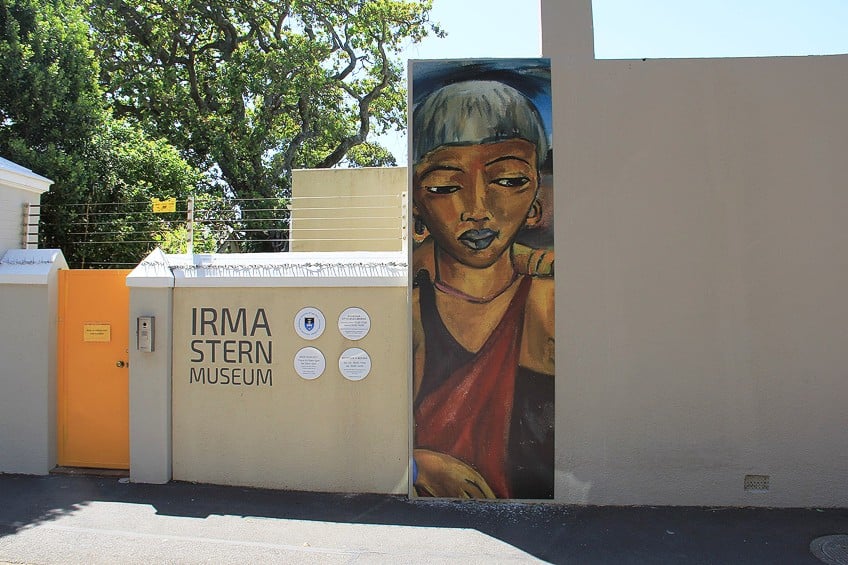Irma Stern – A Look at the Famous South African Painter
One of South Africa’s most celebrated artists, Irma Stern, called Africa her “paradise”. She holds an incomparable place in the South African Modern art movement. Although she was born in South Africa, she was educated in Europe, and these worlds blend together in her work. Despite being European in culture, Africa captured her heart.
Contents
Artist in Context: Who Was Irma Stern?
| Date of Birth | 2 October 1894 |
| Date of Death | 23 August 1966 |
| Country of Birth | South Africa |
| Art Movements | Modern art and Abstract Expressionism |
| Mediums Used | Painting |
Irma Stern was one of the most famous South African painters. She held over a hundred solo exhibitions during her lifetime! The vibrancy and flamboyance of her paintings shocked and outraged critics and audiences in the conservative, colonial art world of South Africa.

During one of her exhibitions, an investigation into public indecency was sparked following complaints from staunch audience members. While it took time for her vibrant modernist work to be accepted, the South African art world soon loved her work.
Today, her work is honored by the Irma Stern Museum, managed by the University of Cape Town.
Early Life
Irma Stern was born in 1894 in Schweizer-Reneke, in South Africa’s North West Province. She was the daughter of German-Jewish immigrants Samuel and Hennie Stern, who came to South Africa around 1886. In 1899, when Irma Stern was five years old, the British army imprisoned her father for his support of the Boers during the Anglo-Boer War.
She and her mother fled to Germany and returned only at the end of the war in 1903. Hereafter, the Stern family would travel on a regular basis to Germany, where they had strong family connections.

Irma Stern moved to Germany in 1913 to study art at the Weimar Academy. As a result of her dissatisfaction with the institution’s instruction, she was transferred to the Levin-Funcke studio in Berlin. Her real mentor, however, was Max Pechstein (1881 – 1955), a prominent member of the German Expressionist group Die Brücke.
Pechstein assisted Stern in the arrangement of her first solo exhibition, which was held in Berlin in 1919. After this exhibition, Stern returned to South Africa.
Art Career
In 1920, Irma Stern held her first South African exhibition at Ashbey’s Gallery in Cape Town. The conservative art world community in Cape Town at the time was not ready to embrace her progressive modern painting style. Audiences were shocked by her work and described it as “Lunatic inspirations” and “Insults to human intelligence”. There was even a police investigation into her work following public indecency complaints.
While her work was not initially accepted in then-conservative South Africa, she found early support from South Africa’s more progressive Jewish community.
In the following years, South African audiences started to respond more favorably to Stern’s work. This was mostly due to the positive attention Stern received from her international exposure in Germany, France, and England. This was evident when she was awarded the Prix d’Honneur at the Bordeaux Exhibition in 1927. In 1929, Stern represented South Africa at the Empire Art Exhibition in London. In 1926, Stern married Johannes Prinz, a German professor at the University of Cape Town. The couple, however, divorced in 1934.

Irma Stern’s paintings were inspired by her travels. She created a wealth of creative work after traveling to Zanzibar in 1939 and 1945, as well as to the Congo in 1942. This period was the most fruitful in her career and in the following years, she received many awards, both locally and abroad. Among the most noteworthy of these awards was the Molteno Grant for outstanding work in 1952, the Guggenheim Foundation National Award for South Africa in 1960, and the Oppenheimer Award.
By this time, she had become one of the most famous South African painters and even represented South Africa at the Venice Biennale in 1950, 1952, 1954, and 1958.
Legacy
With over a hundred solo exhibitions, Irma Stern was an incredibly prolific artist. She passed away in 1966 whilst installing an exhibition in Cape Town. At the time she was also working on a retrospective exhibition that would be held at the Grosvenor Gallery in London. In addition to painting, Irma Stern also was also a sculptor and ceramicist. She was a serious collector of art and artifacts.
The arts and crafts she collected from around the world filled her home in Cape Town. Upon her passing, her home became the Irma Stern Museum, managed by the University of Cape Town.
Characteristics of Irma Stern Paintings
Irma Stern’s paintings have two main themes, portraits of people of different ethnicities, and arrangements of fruits and flowers. Her works are characterized by vibrant colors and expressive brushstrokes. Her works, both in style and concept, remind one of Paul Gauguin. The distinct difference between Gauguin’s and Stern’s work, however, is that Stern did not view her models as mere objects to be painted.
The figures in her work are not depicted to show exotic otherness, but rather to capture the model’s personality. Her work asks, “how do we relate to each other?”.

Her work, however, is still idealized. Her love for Africa leads her to paint romanticized portrayals of people in African cultures. For Stern, Africa represented freedom. Using thick brushstrokes and vibrant colors, Stern created an image of Africa that doesn’t show any of the (very real) suffering, but rather the spiritual beauty she identified within African peoples. Of all the portraits that Stern painted, she never painted one self-portrait.
Some critics argue that Stern sought to explore her own image through the depiction of others and projected her subconscious search for freedom and sexuality onto her models.
Exoticism and Primitivism in Irma Stern Paintings
The idea of depicting the “exotic” and the “primitive” was an important aspect of European Modernism. We see this in Gauguin and Picasso’s works. Think of Picasso’s Les Demoiselles d’Avignon (1907). Stern received a European arts education, and it is likely that her interest in depicting African peoples grew out of this European background.
Her view of civilization was similar to that of Gauguin, in that it threatened primitive traditions.

This idea of primitivism, however, had different implications in a South African context. Germany especially believed that primitivism countered modern anxieties with ideas of “being at one with nature”. In South Africa, however, this fantasy did not exist. South African spectators (at the time) did not want to celebrate primitivism. For them, it was something to be subjugated, controlled, and made to be “civilized”. The result was that Stern received significant recognition for her work abroad, but in South Africa, it sparked controversy.
The controversy around Irma Stern’s paintings has only increased in recent years.
Important Irma Stern Paintings
Irma Stern’s paintings are vibrant and energetic. Her paintings reflect her travels and her keen eye. Her work is unique as it is born out of her deep love for Africa whilst also indicating her German Expressionist training. Below we unpack three of her most prolific paintings.
The Hunt (1929)
| Artwork Title | The Hunt |
| Date | 1926 |
| Medium | Oil on canvas |
| Size (cm) | 176.5 x 88 |
| Collection | Irma Stern Museum, Cape Town, South Africa |
Stern painted The Hunt in 1926 after her travels to Natal and Swaziland during the 1920s. The life-size painting depicts a group of hunters, overlapping each other. All the figures are either naked or simply wearing a loincloth. Recalling rock art, the painting seems to depict the group during their preparations for a hunt. In the foreground, Stern painted hunting dogs in a stylized manner, with fluid expressive lines connecting the bodies of the dogs and the hunters.
Stern had many publications on Picasso in her Cape Town home’s bookshelves, and his influence on her work is clear in this painting. The composition, dimensionality, and mask-like faces in the work reminds one of Picasso’s Les Demoiselles d’Avignon (1907).
Stern’s composition is dense and almost bursts at the frame edges, with various angular and curving lines intersecting. Although her Euro-expressionist arts education is clear in this work, her use of color reminds one of Fauvism rather than Expressionism. Instead of the anxious and energetic colors of the German Expressionists, Stern’s color use is more distinct, vibrant, and joyful. Similar to the Fauvists, her color fields are strongly outlined in confident black strokes. Dark shadows become part of the work’s pattern and rhythm.
The work, like the Fauvists, lacks depth. The illusion of depth is created not by a separate foreground and background, but rather through a distorted perspective.
The Water Carriers (1935)
| Artwork Title | The Water Carriers |
| Date | 1935 |
| Medium | Oil on canvas |
| Size (cm) | 128 x 81.5 |
| Collection | Private collection |
This painting was briefly part of the Johannesburg Art Gallery’s collection. The work is today known simply as “Water Carriers”, but it was previously documented under different titles. Irma Stern wrote in 1941 to the then-director of the Johannesburg Art Gallery, Anton Hendriks, referring to the work as both “Native Composition” and “the large Swazi composition”. Two years later, she called it “Water Carries” and in 1946, it was recorded by the Johannesburg Art Gallery as “Native Water Carriers”.
While Stern traveled to Swaziland in 1933, she was in Natal the same year she made this painting. It is a little strange that Stern at one point referred to the painting as the “Swazi composition”.
Zulu women are more likely to be depicted in the painting. Stern wrote in a letter in July 1935 that she was “trying to find Zulus, which is the most difficult thing”. She later wrote that she felt that “primitive natives” were “dying out – things to ourselves”. Stern explains that she intends to attend a Zulu dance in Durban to find inspiration. She, however, expresses her dissatisfaction that the dance is not “the real thing” but an arranged affair to entertain tourists in the area. By frequently describing the painting as a “composition”, we can assume that Stern did not paint this image in real life, but rather in her studio by assembling a collection of observations of Zulu women.
It is likely that Stern collected mental snapshots of the Zulu dancers to paint a more “native” ceremonial attire. It seems strange then that the painting is not of dancers, but of water carriers. Stern had previously painted water carriers, especially during her visit to Swaziland. However, these water carrier women were dressed in working clothes and were depicted in nature. They certainly did not wear ceremonial Zulu beads. This painting is thus a constructed image that testifies to Stern’s devotion to her idealized ideas of the “exotic, spiritual, and primitive native”. In every way, the painting is defiant. Stern’s composition of this painting of the “primitive native” defied the increased critique she received on her choice of subject matter. Stern also painted Zulu women as defiant of Western culture.
Their strong stances indicate that they are not influenced by Western culture and are not threatened by it. Stern’s aim in this work seems to celebrate Zulu culture’s resilience in South Africa.
Still Life with African Sculptures (1938)
| Artwork Title | Still life with African Sculptures |
| Date | 1938 |
| Medium | Gauche on paper |
| Size (cm) | 63 x 50 |
| Collection | Private collection |
Irma Stern’s still life paintings frequently incorporate oriental, medieval European, and African artifacts she collected. She often painted still life works as a way of experimenting with style and composition. The techniques she used in her still life paintings were often looser and more expressive than in her portrait paintings.
In this work, Stern made an arrangement that featured two African sculptures, a blue spotted jug with two paint brushes in it, a can, a bowl, and vivid red cloth in the background with white African prints on it.
The addition of the can and bowl, which seems to contain something like soup, makes the work feel homely. Many of Stern’s still life paintings have such homely qualities in them, making the works feel like intimate snapshots of her daily life. The African sculptures, especially the central figure, become the focal point of the work. Its blue hues stand in contrast with the bright red cloth behind it. The figure appears to be painted with more attention to detail compared to the rest of the painting. The blue coloring gives it a look of aged wood.
This central figure also gives the work a feeling of sadness, its broken-off hand suggesting a lack of connection.
Reading Recommendations
Irma Stern’s vibrant and expressive paintings lean towards lush publications. Although Stern’s work is still highly sought after today in South Africa, her international recognition started to dwindle after her passing. In these two publications, her contributions to Modernist and Expressionist art are recognized and corrected.
Irma Stern: African in Europe – European in Africa (2021) by Sean O’Toole
In this Irma Stern monograph, her achievements are celebrated as one of South Africa’s most accomplished painters. Her works are described as playing a key role in the modernization of South African art. The book includes reproductions of Stern’s letters and illustrations from her travelogs. The book covers an in-depth time span from her childhood, her family’s involvement in the South African War, her training in Berlin, and her return to South Africa. The book also takes a fresh look at the political and cultural associations in Stern’s works.
- A detailed Irma Stern monograph
- Includes reproductions of Stern's illustrations from her travelogs
- Focuses on the political and cultural forces that shaped Stern's work
Irma Stern and the Racial Paradox of South African Modern Art: Audacities of Color (2022) by LaNitra M. Berger
This recently published book draws on various archival research to explore how Irma Stern became one of the most famous South African painters. The book also includes new interviews that shed more light on the artist’s paintings of other ethnicities and the socio-political context in which they lived. A half-century after she died, Stern’s legacy continues to challenge assumptions about race, gender roles, class, and religious identity.
- Well-researched
- Explores how Stern became one of the most famous South African painters
- Includes new interviews with the artist
Irma Stern appreciated beauty in people, landscapes, and cultures. The transformative power of image-making is evident in her paintings. Starting with drawings of her subjects, Stern transformed reality into vibrant and dynamic images. Her work exemplified a precise Modernist preoccupation with medium, technique, and composition.
Frequently Asked Questions
What Happened After Irma Stern’s Death?
Irma Stern passed away while installing an exhibition in Cape Town. After her passing, her home in Cape Town was transformed into a museum, which is now managed by the University of Cape Town. The home, now called the Irma Stern Museum, showcases many of the artist’s work. It also showcases her studio with easels, paintbrushes, and palette knives, and all of the art and crafts she collected during her travels.
What Was German Expressionism’s Influence on Irma Stern?
Irma Stern completed most of her art education in Germany. As a result of studying with the German Expressionists, she continued to work in this style when she returned to South Africa. Her modern style of painting was unfamiliar to the South African audience, and her work was initially received with backlash and negative criticism. It took some time for the South African art world to appreciate her work.
Jordan Anthony is a Cape Town-based film photographer, curator, and arts writer. She holds a Bachelor of Art in Fine Arts from the University of the Witwatersrand, Johannesburg, where she explored themes like healing, identity, dreams, and intuitive creation in her Contemporary art practice. Jordan has collaborated with various local art institutions, including the KZNSA Gallery in Durban, the Turbine Art Fair, and the Wits Art Museum. Her photography focuses on abstract color manipulations, portraiture, candid shots, and urban landscapes. She’s intrigued by philosophy, memory, and esotericism, drawing inspiration from Surrealism, Fluxus, and ancient civilizations, as well as childhood influences and found objects. Jordan is working for artfilemagazine since 2022 and writes blog posts about art history and photography.
Learn more about Jordan Anthony and about us.
Cite this Article
Jordan, Anthony, “Irma Stern – A Look at the Famous South African Painter.” artfilemagazine – Your Online Art Source. April 6, 2023. URL: https://artfilemagazine.com/irma-stern/
Anthony, J. (2023, 6 April). Irma Stern – A Look at the Famous South African Painter. artfilemagazine – Your Online Art Source. https://artfilemagazine.com/irma-stern/
Anthony, Jordan. “Irma Stern – A Look at the Famous South African Painter.” artfilemagazine – Your Online Art Source, April 6, 2023. https://artfilemagazine.com/irma-stern/.





